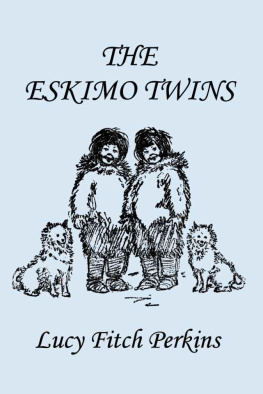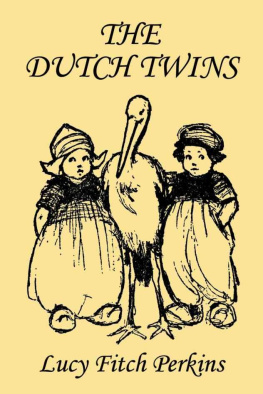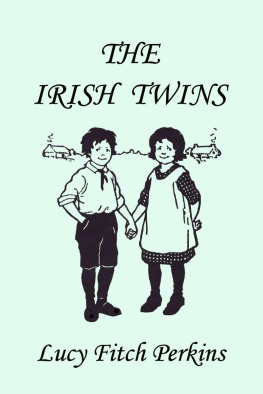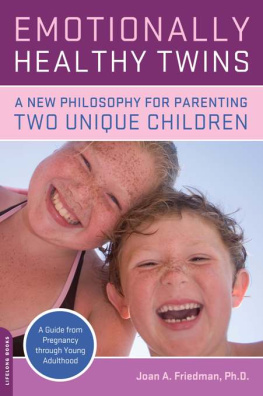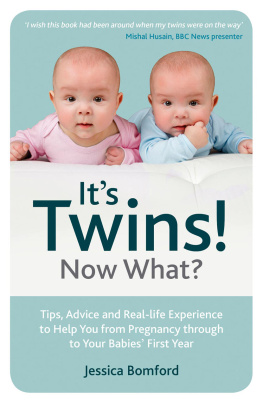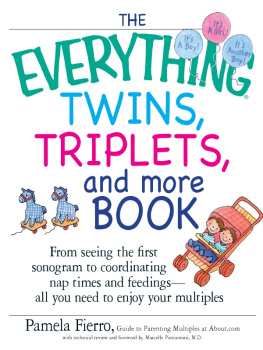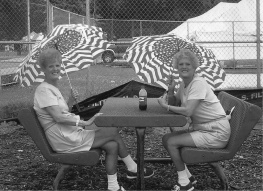The Eskimo Twins
by
Lucy Fitch Perkins
Yesterday's Classics
Chapel Hill, North Carolina
Cover and Arrangement 2010 Yesterday's Classics, LLC
All rights reserved. No part of this book may be reproduced or retransmitted in any form or by any means without the written permission of the publisher.
This edition, first published in 2010 by Yesterday's Classics, an imprint of Yesterday's Classics, LLC, is an unabridged republication of the work originally published by Houghton Mifflin Co. in 1914. This title is available in a print edition (ISBN 978-1-59915-059-8).
Yesterday's Classics, LLC
PO Box 3418
Chapel Hill, NC 27515
Yesterday's Classics
Yesterday's Classics republishes classic books for children from the golden age of children's literature, the era from 1880 to 1920. Many of our titles are offered in high-quality paperback editions, with text cast in modern easy-to-read type for today's readers. The illustrations from the original volumes are included except in those few cases where the quality of the original images is too low to make their reproduction feasible. Unless specified otherwise, color illustrations in the original volumes are rendered in black and white in our print editions.
Contents
The Eskimo Twins
T HIS is the true story of Menie and Monnie and their two little dogs, Nip and Tup.
Menie and Monnie are twins, and they live far away in the North, near the very edge.
They are five years old.
Menie is the boy, and Monnie is the girl. But you cannot tell which is Menie and which is Monnie,not even if you look ever so hard at their pictures!
That is because they dress alike.
When they are a little way off even their own mother can't always tell. And if she can't, who can?
Sometimes the twins almost get mixed up about it themselves. And then it is very hard to know which is Nip and which is Tup, because the little dogs are twins too.
Nobody was surprised that the little dogs were twins, because dogs often are.
But everybody in the whole village where Menie and Monnie live was simply astonished to see twin babies!
They had never known of any before in their whole lives.
Old Akla, the Angakok, or Medicine Man of the village, shook his head when he heard about them. He said, "Such a thing never happened here before. Seals and human beings never have twins! There's magic in this."
The name of the twins' father was Kesshoo. If you say it fast it sounds just like a sneeze.
Their mother's name was Koolee. Kesshoo and Koolee, and Menie and Monnie, and Nip and Tup, all live together in the cold Arctic winter in a little stone hut, called an "igloo."
In the summer they live in a tent, which they call a "tupik." The winters are very long and cold, and what do you think! They have one night there that is four whole months long!
For four long months, while we are having Thanksgiving, and Christmas, and even Lincoln's Birthday, the twins never once see the sun!
But at last one day in early spring the sun comes up again out of the sea, looks at the world for a little while, and then goes out of sight again. Each day he stays for a longer time until after a while he doesn't go out of sight at all!
Then there are four long months of daylight when there is never any bedtime. Menie and Monnie just go to sleep whenever they feel sleepy.
Although many Eskimos think twins bring bad luck, Kesshoo and Koolee were very glad to have two babies.
They would have liked it better still if Monnie had been a boy, too, because boys grow up to hunt and fish and help get food for the family.
But Kesshoo was the best hunter and the best kyak man in the whole village. So he said to Koolee, "I suppose there must be girls in the world. It is no worse for us than for others."
So because Kesshoo was a brave fisherman and strong hunter, and because Koolee was clever in making clothing and shoes out of the skins of the animals which he brought home, the twins had the very best time that little Eskimo children can have.
And that is quite a good time, as you will see if you read all about it in this book.
The Twins Go Coasting
I
O NE spring morning, very early, while the moon still shone and every one else in the village was asleep, Menie and Monnie crept out of the dark entrance of their little stone house by the sea.
The entrance to their little stone house was long and low like a tunnel. The Twins were short and fat. But even if they were short they could not stand up straight in the tunnel.
So they crawled out on all fours. Nip and Tup came with them. Nip and Tup were on all fours, too, but they had run that way all their lives, so they could go much faster than the twins. They got out first.
Then they ran round in circles in the snow and barked at the moon. When Menie and Monnie came out of the hole, Tup jumped up to lick Monnie's face. He bumped her so hard that she fell right into the snowbank by the entrance.
Monnie didn't mind a bit. She just put her two fat arms around Tup, and they rolled over together in the snow.
Monnie had on her fur suit, with fur hood and mittens, and it was hard to tell which was Monnie and which was Tup as they tumbled in the snow together.
Pretty soon Monnie picked herself up and shook off the snow. Then Tup shook himself, too. Menie was rolling over and over down the slope in front of the little stone house. His head was between his knees and his hands held his ankles, so he rolled just like a ball.
Nip was running round and round him and barking with all his might. They made strange shadows on the snow in the moonlight.
Monnie called to Menie. Menie straightened himself out at the bottom of the slope, picked himself up and ran back to her.
"What shall we play?" said Monnie.
"Let's get Koko, and go to the Big Rock and slide downhill," said Menie.
"All right," said Monnie. "You run and get your sled."
Menie had a little sled which his father had made for him out of driftwood. No other boy in the village had one. Menie's father had searched the beach for many miles to find driftwood to make this sled.
The Eskimos have no wood but driftwood, and it is so precious that it is hardly ever used for anything but big dog sledges or spears, or other things which the men must have.
Most of the boys had sleds cut from blocks of ice. Menie's sled was behind the igloo. He ran to get it, and then the twins and the pupsall fourstarted for Koko's house.
Koko's house was clear at the other end of the village. But that was not far away, for there were only five igloos in the whole town.
First there was the igloo where the twins lived. Next was the home of Akla, the Angakok, and his two wives. Then there were two igloos where several families lived together. Last of all was the one where Koko and his father and mother and baby brother lived.
Koko was six. He was the twins' best friend.
II
The air was very still. There was not a sound anywhere except the barking of the pups, the voices of Menie and Monnie, and the creaking sound of the snow under their feet as they ran.

